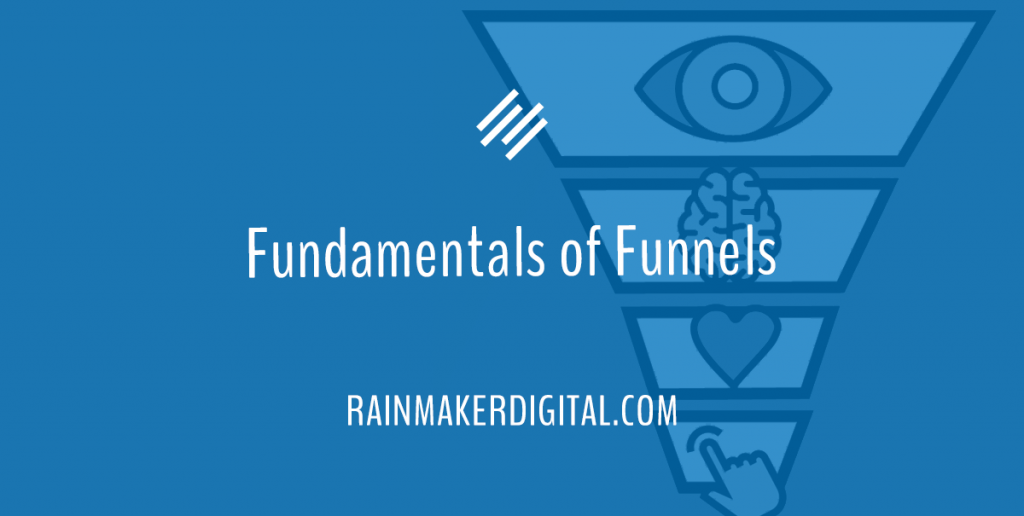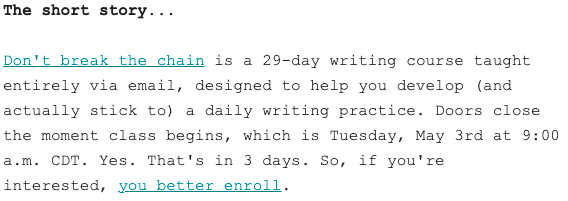
Want to get more conversions? Start using funnels.
Marketing funnels are critical if you want to build an audience that engages and converts.
A funnel is simply a prospect’s journey through your content from first interaction to conversion. It’s called that because the number of people at each stage tends to diminish, making a funnel shape.
A Funnel for Every Need
Some funnels are meant to get people to purchase a product. This is by far the most common goal. Others may be meant to get them to follow a particular resource or share a referral link. Decide your marketing goal first, then design a funnel for that user action.
There are quite a few frameworks to choose from. These include:
- Lead generation, lead nurturing, sale
- AICIEP (Awareness, Interest, Consideration, Intent, Evaluation, Purchase)
- TOFU/MOFU/BOFU (Top of Funnel, Middle of Funnel, Bottom of Funnel)
There are a number of other frameworks out there (you can find a fairly exhaustive list here), but they all follow the same general pattern: AIDA.
Anatomy of a Funnel
AIDA stands for Attention, Interest, Desire and Action. It’s a classic explanation of the user journey — the first known published use of the AIDA acronym was in 1921, and the principles have been in use since the late 1800s. The steps in the framework may change, but AIDA applies to all of them.
We’ll use TOFU/MOFU/BOFU to lay out a marketing funnel, and at each step, we’ll explain which parts of AIDA this section of the funnel fulfills. You can use this as a template for your own funnels.
TOFU
Top of Funnel or TOFU is the initial stage of the user journey. Content at this stage helps people trying to learn something.
Take Rainmaker Digital Services, for example. Someone at the top of our funnel (maybe you!) might be looking for information on content marketing and stumble across Rainmaker Way or Digital Marketing for Everyone Else.
Don’t try to sell to the TOFU audience. A hard sell at this stage of the funnel would turn them off. In our case, the goal of our TOFU content is to explain one simple point: “Content marketing is key to growing your business.” We provide useful content so we can become a trusted source. You can too. Focus on your audience and what you can do for them.
TOFU content correlates with the Attention section of AIDA. You’re grabbing the audience’s attention by showing them a problem or an opportunity you can help them address. Education is the goal of this step. Be a teacher or a trusted friend, not a salesman or a carnival barker.
MOFU
At MOFU, or “Middle of the Funnel,” you’re trying to influence or guide the decision-making process.
This step includes content that fits the Interest and Desire sections of AIDA.
Interest starts when people want to solve the problem or embrace the opportunity that you’ve alerted them to. Your education content is bearing fruit. They believe you. You have to persuade them that there’s something they can do (and you can help). Explain all the ingredients that a potential solution will need to have, but don’t necessarily pitch your brand.
Desire comes next. They’re looking for a solution, and they’re probably researching which alternative is best. Now you can actually start explaining why your brand has the best solution.
For Rainmaker Digital Services, the middle of the funnel is when people regularly engage with our content. They sign up for the Rainmaker Dispatch and begin to regularly read our articles, maybe follow and comment on social media. They’re already convinced that content marketing is key to growing their business. Now we can point them toward Rainmaker Platform and how it helps them achieve those goals.
BOFU
BOFU, the “Bottom of Funnel,” is the last step before conversion. Your conversion could take a variety of forms — a sale, a referral or a share, for example.
They’re convinced that you’re an authority in this field. They trust you. They understand the problem or opportunity that needs to be addressed. They’re open to the idea that you have a solution. Now they’re ready to take action.
This is the Action step of AIDA.
You’re not trying to educate now. You want them to act. You need to present an offer that meets their expectations and needs. We’ve covered this before in greater detail, but if you need a quick refresher, an offer isn’t a pitch. An offer is a marketing message that does the following:
- Grabs attention
- Shows how you can solve a problem
- Communicates value
- Builds trust
It is an expression of your value above and beyond your competitors in terms that resonate with your audience.
Special offers, demonstrations and testimonials are all keys to this step. Rainmaker Digital Services leans on demonstrations heavily for the bottom of the funnel. For SaaS products, there’s nothing like seeing the solution in action.
Other brands use different BOFU tactics. I’m a subscriber to Cole Schafer’s Honey Copy newsletter. Here’s what he sent me the other day:

Schafer shares samples of his premium content to get people to enroll, much like an ice cream shop or brewery might give away small samples to people who visit. If you like it, you’re likely to purchase.
People at this point want to make a decision. Give them a reason to. Then write a strong CTA. Get them to take action.
Fill Your Funnel
These are the steps you need to include to create a successful marketing funnel. Define the goal of your funnel, create content that fits the TOFU, MOFU, BOFU stage of the user and apply the appropriate AIDA principles and watch your conversion improve.
Provide your audience with the content they need at every step of the way, whether they’re looking for education, trying to find a solution or thinking about purchasing. If you do, you will see your conversions go up. And if you need a hand, reach out — we’ll help you create the great content you need to make your funnel work.
Best Regards,
David Brandon
Copywriter
Rainmaker Digital Services